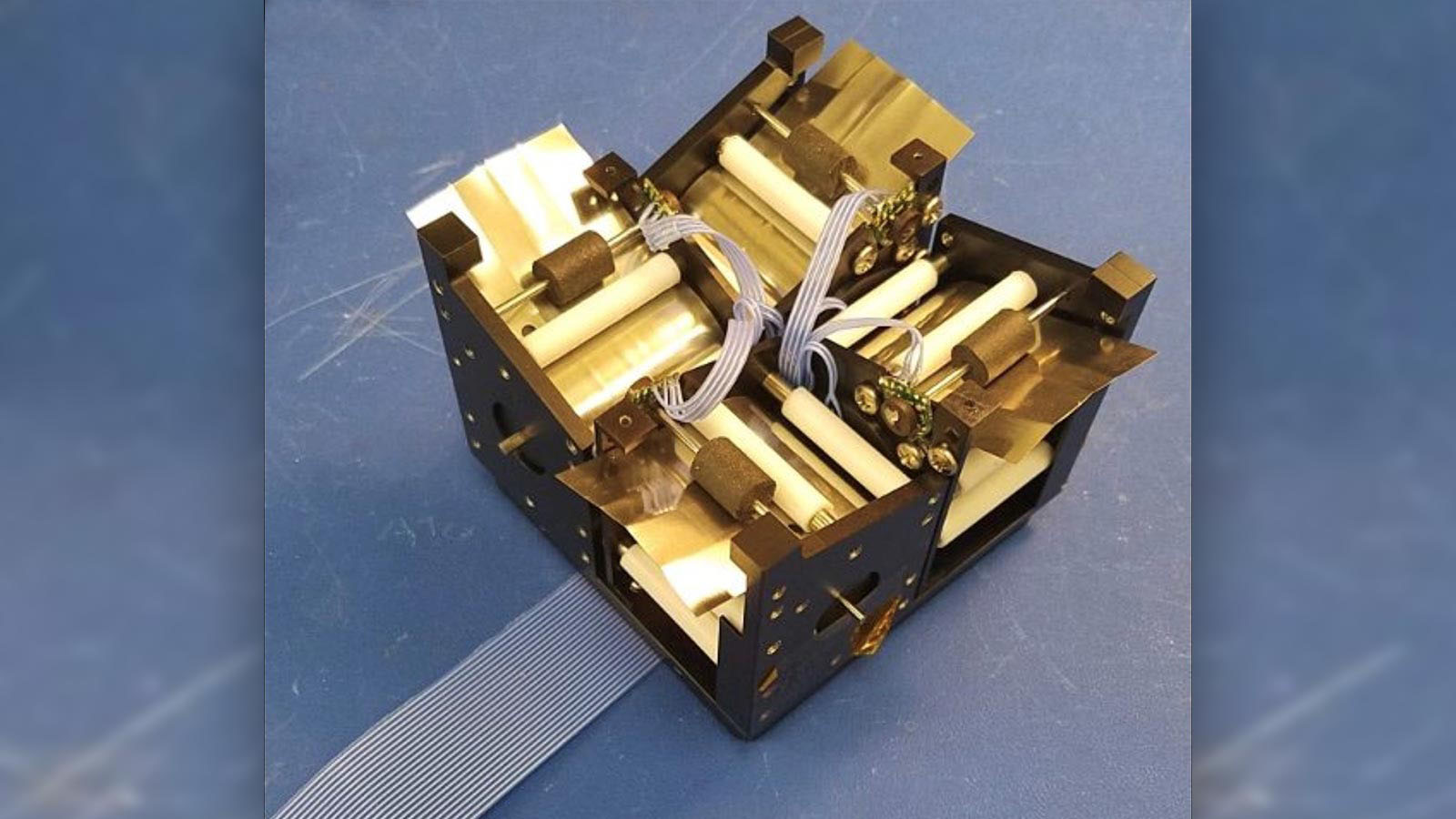Stay Up to Date
Submit your email address to receive the latest industry and Aerospace America news.
Tech demonstration scheduled to launch to ISS this year
The small size and mass of cubesats make them an attractive option for agencies, companies and universities looking to reduce the cost of launching spacecraft to orbit, but those features make it hard to see how operators might retrieve the hardware after it comes down to Earth, given that extra mass of thrusters and fuel that would be required to execute a controlled landing.
A team of researchers at the University of Florida believe they’ve designed a way to make cubesat recovery easier: the D3, short for Deorbiting Drag Device. This 10-centimeter-long module, about the size of a drink coaster, would be bolted to the sides of cubesats, and similar to a tape measure would unfurl four stainless steel booms that could be extended or retracted on command, steering a cubesat along the desired trajectory.
“The other [deorbiting] systems that we’ve seen, they deploy one time, and they bring your cubesat down no matter what, and you can’t control where you end up,” Riccardo Bevilacqua, an associate professor of aerospace engineering at the University of Florida and D3 principal investigator, told me in an interview.
Concepts proposed over the last few years have included solar sails, whose larger surface area is primarily intended to deorbit cubesats more quickly. Controllers can’t position solar sails to direct a cubesat’s trajectory as it plows through the thin veil of atmospheric particles, Bevilacqua said.
By extending or retracting the D3 booms, “we can track certain trajectories to get to the desired reentry interface,” he said.
Bevilacqua began working on the D3 concept in 2015, after officials at NASA’s Launch Services Program at Kennedy Space Center in Florida approached him and his colleagues about devising hardware for controlled reentry of cubesats up to 12 units long, as well as an accompanying algorithm to predict the landing location. As the researchers conducted the NASA-funded studies and preliminary design work, they realized a secondary benefit as well: By changing the length of the retractable booms, “you create asymmetry in how gravity is acting on your spacecraft, and that creates torque,” a twisting force that maneuvers the cubesat midflight and could be used to avoid collisions with other spacecraft, Bevilacqua said.
But first, Bevilacqua and his team must prove the D3 technology and their predictive algorithm via a technology demonstration scheduled for launch later this year. Plans call for the researchers to finish building a D3 and 2U cubesat to which the module will be bolted by May. The hardware will be shipped to Nanoracks’ Houston facility for installation in a Nanoracks Cubesat Deployer, a rectangular tube with internal springs and levers that push spacecraft out to orbit.
The D3 and its spacecraft are among 12 NASA-funded cubesat experiments slated to launch aboard a SpaceX Cargo Dragon in late 2021. Once deployed from ISS, the Nanoracks dispenser will eject D3 and its cubesat to a roughly 400-kilometer orbit. The goal is for the D3 module to eventually deploy its booms under command from onboard software, but for the technology demonstration, ground controllers at the University of Florida will command the spacecraft.
Once the cubesat’s altitude reaches about 300 kilometers, controllers will command the D3 booms to extend to their full length of 3.7 meters, retracting as needed to steer the cubesat along the desired course. Bevilacqua predicts the cubesat will enter the atmosphere above Florida within six months, though the team does not plan to recover any hardware that might survive the landing.
About cat hofacker
Cat helps guide our coverage and keeps production of the print magazine on schedule. She became associate editor in 2021 after two years as our staff reporter. Cat joined us in 2019 after covering the 2018 congressional midterm elections as an intern for USA Today.
Related Posts
Stay Up to Date
Submit your email address to receive the latest industry and Aerospace America news.




